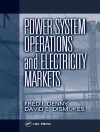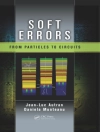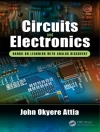This book comprehensively explores the dynamic landscape of green hydrogen, a transformative energy carrier. It offers a resource for researchers, professionals, and policymakers in sustainable energy. Starting with foundational understanding, it delves into hydrogen’s importance, production methods, and climate change mitigation. This timely contribution addresses a knowledge gap by integrating green hydrogen’s multifaceted aspects. By integrating multifaceted aspects, from fundamental principles to cutting-edge applications and societal implications, it provides a holistic grasp of green hydrogen’s scientific, technological, and policy dimensions. The book navigates the intricate journey of green hydrogen production, spotlighting catalytic and technological breakthroughs, renewable energy integration, electrolyzer systems, and material strategies. Industrial applications and environmental impacts are detailed, covering life cycle assessments, water use, land considerations, and policy insights. This book caters to a diverse readership invested in sustainability and renewable energy transition. This book’s multidisciplinary expertise guides the energy transition, fostering informed decision-making and inspiring collaboration. Policymakers, entrepreneurs, environmental experts, and researchers can find crucial implications, gain strategic insights, and explore ecological aspects. It endeavors to equip stakeholders with the knowledge, insights, and foresight needed to usher in a sustainable energy paradigm.
قائمة المحتويات
Chapter 1. Green hydrogen: An introduction.- Chapter 2. Advancements and Innovations in Green Hydrogen Technologies.- Chapter 3. A glance on advancements and innovations in green hydrogen production technologies.- Chapter 4. Hydrogen energy: A new era of clean energy towards sustainable development.- Chapter 5. Challenges and Opportunities in Green Hydrogen Production: Paving the Way Towards a Sustainable Energy Future.- Chapter 6. Policy Frameworks and International Collaborations for Green Hydrogen Deployment: Lessons and Best Practices.- Chapter 7. Solid-State Materials for Hydrogen Storage.- Chapter 8. Hydrogen Production and Utilization through Electrochemical Techniques.
عن المؤلف
Dr. Paramvir Singh currently holds the position of Assistant Professor in the Department of Mechanical Engineering at the National Institute of Technology, Agartala. He completed postdoctoral research in Combustion Chemistry Center at the National University of Ireland, Galway, in 2022, followed by another postdoc focusing on fuels and combustion at the Indian Institute of Technology (IIT), Bombay. In 2019, he was a visiting postdoc in the Mechanical Engineering Department of the University of Sheffield, UK. He earned his Master’s and Ph.D. in Mechanical Engineering from the National Institute of Technology Hamirpur, India, in 2013 and 2019, respectively. His research interests span a wide range of topics, including renewable energy, fuel, combustion systems, emission control, gasification, and waste-to-energy technologies. He has a prolific publication record, with more than 50 research articles in international journals and conferences, as well as five book chapters and monographs.
Prof. Avinash Kumar Agarwal joined IIT Kanpur in 2001. He worked as a post-doctoral fellow at the Engine Research Center, UW@Madison, USA (1999–2001). His interests are IC engines, combustion, alternate and conventional fuels, lubricating oil tribology, optical diagnostics, laser ignition, HCCI, emissions and particulate control, 1D and 3D simulations of engine processes, and large-bore engines. He has published 525+ peer-reviewed international journal and conference papers, 63 edited books, 129 chapters, 16200+ Scopus, and 24300+ Google Scholar citations. He is an editor of FUEL, an associated editor of the SAE Journal of Engines, and the ASME Open Journal of Engineering. He has edited “Handbook of Combustion” that has 5 Volumes and 3168 pages. He was a highly cited researcher (2018) in the top ten HCR from India among 4000 HCR researchers globally in 22 fields of inquiry.
Dr. Anupma Thakur is currently working as a postdoctoral research associate funded by the National Science Foundation (NSF) and the Department of Energy (Do E) at the School of Materials Engineering at Purdue University and Purdue School of Engineering and Technology at Indiana University-Purdue University Indianapolis (IUPUI), USA. She is also an early career research fellow at the Indian Institute of Technology, Gandhinagar, Gujarat, India. She completed a Ph.D. as a DST-INSPIRE research fellow at Ac SIR, CSIR-CSIO (National Research and Development Laboratory) Chandigarh, India, in August 2021. She earned a gold medal in Master of Technology (M.Tech). in Nanoscience and Nanotechnology from the Panjab University, Chandigarh, India, in 2016. She is a well-established young nanotechnologist in the field of advanced nanomaterials and materials science for various applications, including materials for clean hydrogen energy generation, carbon capture and utilization, chemical sensors, photo and electrocatalysis, extreme environments, and actuators.
Prof. Ravindra Kumar Sinha is Professor of Applied Physics and Vice Chancellor of Gautam Buddha University, Greater Noida. He was Chief Coordinator: TIFAC-Center of Relevance and Excellence in Fiber Optics and Optical Communication, Mission REACH Program, Technology Vision-2020, Govt. of India Delhi Technological University (formerly Delhi College of Engineering, University of Delhi) Bawana Road, Delhi-110042, India. He received M.Sc. degree in Physics from the Indian Institute of Technology (IIT), Kharagpur, India, in 1984, and Ph.D. degree in fiber optics and optical communication technology from the IIT, Delhi, India, in 1990.He has also served as Outstanding Professor in Engineering Sciences of the Academy of Scientific and Innovative Research (Ac SIR), CSIR, Govt. of India. He is Author and Co-author of 380 research publications in the leading national and international journals (174) and conference proceedings (206). He has written 7 book chapters, edited 3 books, and originated 5 patents.












